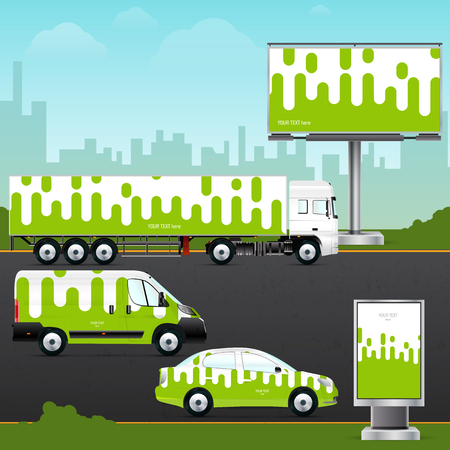Overview of Solar-Integrated EV Charging Stations for India
As India accelerates its transition towards sustainable mobility and clean energy, the integration of solar power with electric vehicle (EV) charging infrastructure has become both relevant and crucial. Solar-integrated EV charging stations are designed to harness the abundant solar energy available across the country, converting it into usable electricity for charging electric vehicles. This approach not only reduces dependence on the conventional grid, which is often stressed and reliant on fossil fuels, but also supports Indias ambitious renewable energy targets. In the Indian context, where sunlight is plentiful for most of the year, adopting solar-powered EV charging solutions aligns perfectly with local environmental conditions and addresses the pressing need for eco-friendly transportation. Furthermore, these stations provide an opportunity to decentralise power generation, enhance energy security, and promote green jobs within the country, making them a vital component in Indias evolving energy and mobility landscape.
2. Addressing Indian Infrastructure and Environmental Challenges
Indias rapid urbanisation and growing energy demand have put immense pressure on its existing infrastructure, particularly the power grid and urban air quality. Solar-integrated EV charging stations are specially designed to address these unique challenges by leveraging renewable energy resources while supporting the nations transition towards clean mobility.
Overcoming Grid Limitations
The national grid in India often faces issues like voltage fluctuations, load shedding, and limited reach in remote or rural areas. Solar-powered EV charging stations reduce dependency on the conventional grid by generating electricity onsite. This decentralised approach ensures consistent charging availability even during grid outages and eases the load on overburdened distribution networks.
| Challenge | Traditional EV Charging | Solar-Integrated Solution |
|---|---|---|
| Grid Reliability | Highly dependent; frequent outages affect service | Onsite solar generation provides backup power |
| Rural Accessibility | Lack of charging due to absence of strong grid connection | Off-grid solar setups enable rural deployment |
| Electricity Costs | Variable, subject to peak-hour tariffs | Reduced operational costs with free solar energy |
Tackling Air Pollution Concerns
Major Indian cities like Delhi, Mumbai, and Kolkata consistently rank among the world’s most polluted. The widespread use of fossil-fuel vehicles is a significant contributor to this issue. By integrating solar energy with EV charging infrastructure, these stations directly reduce greenhouse gas emissions and particulate matter released into the environment. Moreover, they support government initiatives such as the National Electric Mobility Mission Plan (NEMMP) and FAME India Scheme aimed at promoting electric vehicles for cleaner air.
Environmental Impact Comparison
| Parameter | Conventional Charging (Coal-based) | Solar-Integrated Charging |
|---|---|---|
| CO₂ Emissions (per kWh) | ~900g CO₂/kWh* | <50g CO₂/kWh** (mainly from manufacturing) |
| Air Quality Improvement Potential | Limited; indirect emissions remain high | Significant; enables zero-emission vehicle operation from source to wheel |
| Sustainability Alignment | Poor; reliant on finite fossil resources | High; uses abundant solar resource available across India |
*Average emission factor based on coal-heavy Indian grid
**Lifecycle emissions including panel production and maintenance.
By addressing both infrastructural constraints and environmental priorities, solar-integrated EV charging stations present a robust solution tailored for Indias specific needs, driving sustainable development and reliable green mobility for all regions.

Localized Design Features and Customization
To ensure optimal performance and sustainability, solar-integrated EV charging stations designed for India incorporate several localized features that address the countrys unique environmental and infrastructural challenges. These stations are engineered to withstand Indias diverse climate zones—from the humid coasts to the arid interiors—making robustness a core design principle. The exterior materials and structural components are selected for enhanced weather resistance, offering protection against heavy monsoon rains, high humidity, intense heatwaves, and dust storms common in various regions.
Adaptability to Power Supply Inconsistencies
Power supply fluctuations and outages are a frequent concern in many Indian states. To address this, these EV charging stations integrate advanced battery storage systems and intelligent power management solutions. The solar panels not only provide renewable energy during peak sunlight hours but also store surplus electricity for uninterrupted operation during grid failures or at night. This ensures reliable service even in areas with unstable electricity grids, supporting both urban centers and rural locations.
Customized Charging Solutions for Regional Needs
Indias road infrastructure and vehicle usage patterns vary greatly between metropolitan cities and remote towns. Recognizing this, station layouts are modular and scalable, allowing installation at highway rest stops, public parking spaces, apartment complexes, or village community centers. Multiple charging connectors compatible with different Indian EV models—including two-wheelers, three-wheelers (rickshaws), and four-wheelers—are standard features. Additionally, user interfaces are available in multiple regional languages to improve accessibility.
Enhanced Safety and Durability
The stations employ anti-corrosion coatings and tamper-proof enclosures to extend service life under harsh conditions. Smart sensors monitor temperature, humidity, and operational status in real-time, enabling proactive maintenance and reducing downtime. This combination of rugged hardware and digital intelligence is tailored to Indias demanding usage scenarios, ensuring that solar-integrated EV charging stations remain functional, efficient, and safe throughout their lifecycle.
4. Cultural Adoption and User-Friendly Interfaces
When designing solar-integrated EV charging stations for India, it is critical to focus on cultural adoption and the creation of user-friendly interfaces that cater to the diverse Indian population. This involves more than just technical functionality; it requires an understanding of local languages, regional preferences, and payment habits unique to India.
Integration of Local Languages
India is a multilingual nation with 22 officially recognized languages and hundreds of dialects. For seamless user experience, charging station interfaces must support multiple Indian languages, especially Hindi, Tamil, Telugu, Bengali, Marathi, and Kannada. By providing options for language selection at the start screen, users from different regions can interact comfortably with the system. This inclusivity increases accessibility and encourages broader adoption across various demographics.
Simple Payment Systems Tailored for India
Payment systems in India are rapidly evolving with digital solutions like UPI (Unified Payments Interface) and digital wallets such as Paytm, PhonePe, and Google Pay becoming mainstream. To align with local payment habits, solar-integrated EV charging stations should be equipped with easy-to-use payment modules that support these popular methods. The following table illustrates key features required:
| Payment Method | Key Feature | User Benefit |
|---|---|---|
| UPI | Instant QR code-based payments | No need for cash or cards; highly secure |
| Digital Wallets (Paytm, PhonePe) | App-based transactions | Familiarity among urban and rural users |
| Credit/Debit Cards | NFC/tap support at kiosks | Cater to tech-savvy users |
User Interfaces Designed for Diverse Groups
The interface must be intuitive enough for both tech-savvy urbanites and less experienced rural users. Features such as large icons, step-by-step guided instructions, voice prompts in local languages, and clear visual indicators make the process straightforward. Additionally, incorporating accessibility options for the elderly and differently-abled ensures wider usability.
Community-Centric Design Approach
Designing with a community-centric approach—such as offering helpdesk numbers in regional languages or creating short instructional videos—can further empower users unfamiliar with digital technology. This fosters trust and confidence among first-time EV owners.
Summary of Key User-Friendly Features
| Feature | Description |
|---|---|
| Multi-language Support | User interface available in major Indian languages |
| Digital Payment Integration | Seamless UPI and wallet payments for convenience |
| Accessible Navigation | Large icons, guided steps, voice instructions |
This culturally adaptive design philosophy not only enhances user experience but also accelerates widespread adoption of EV infrastructure across India’s diverse landscape.
5. Government Policies, Incentives, and Partnerships
Central Government Initiatives
The Government of India has taken a proactive approach in promoting solar-integrated EV charging stations through various flagship schemes and policies. The FAME India Scheme (Faster Adoption and Manufacturing of Electric Vehicles), now in its second phase, specifically encourages the deployment of EV charging infrastructure, with a preference for stations powered by renewable energy sources such as solar. The Ministry of New and Renewable Energy (MNRE) also supports solar power generation, offering capital subsidies and incentives that can be leveraged by developers to lower the cost of solar-integrated charging stations.
State-Level Subsidies and Support
Several Indian states have introduced their own EV policies tailored to local conditions, addressing both urban and rural needs. States like Maharashtra, Delhi, Gujarat, Tamil Nadu, and Karnataka offer additional financial incentives for setting up public and private EV charging stations, with extra benefits for those using solar integration. These include land allocation at subsidised rates, tax exemptions, and streamlined approval processes to speed up project implementation.
Public-Private Partnerships (PPP)
Recognising the scale of infrastructure required, governments at both central and state levels are actively encouraging public-private partnerships. Collaborations with leading energy companies, automotive manufacturers, and technology providers help to pool resources and expertise. Notable examples include joint ventures between state discoms (distribution companies), oil marketing companies like IOCL/BPCL/HPCL, and private solar solution providers to deploy integrated charging stations at key highways, urban centres, and transport hubs.
Special Focus on Rural & Semi-Urban India
Specific initiatives target rural and semi-urban regions where reliable grid connectivity is a challenge. By incentivising off-grid or hybrid solar-powered EV chargers in these areas, government policies aim to bridge the infrastructure gap while ensuring sustainability. This not only supports the adoption of electric mobility but also aligns with Indias broader goals under the National Solar Mission and climate commitments.
Future Roadmap & Industry Collaboration
The government continues to consult with industry stakeholders to refine policies and address challenges unique to India—such as high population density, climatic diversity, and power quality issues. With ongoing revisions in guidelines for public charging infrastructure (PCI), there is an increased emphasis on standardisation, safety protocols, and interoperability—ensuring that solar-integrated EV charging becomes mainstream across the country.
6. Case Studies and Potential Impact on Indian Urban and Rural Mobility
Pilot Projects Driving Change
Several pioneering pilot projects across India are demonstrating the feasibility and value of solar-integrated EV charging stations. In Delhi NCR, for instance, a collaboration between state authorities and private firms has established solar-powered charging hubs at metro stations and key public locations. These projects use indigenous solar panels combined with fast-charging infrastructure, ensuring grid independence during peak sunlight hours. In Bengaluru, tech parks are adopting rooftop solar arrays for EV charging, enabling employees to charge their vehicles sustainably while at work. Such pilots are critical in building local confidence and generating data specific to Indian climatic and operational conditions.
Success Stories: Urban Adoption
Urban centres like Mumbai and Hyderabad have witnessed significant success stories where solar-integrated charging stations have improved the convenience and cost-effectiveness of EV ownership. For example, a municipal initiative in Mumbai deployed solar canopies over parking lots in commercial zones, supporting both two-wheeler and four-wheeler charging. This has reduced peak electricity demand from the grid, lowered operational costs for station operators, and provided commuters with reliable, green energy solutions. Additionally, app-based integration allows users to locate available solar-powered chargers easily, enhancing the overall user experience in congested city environments.
Reaching Rural India: Enhancing Accessibility
In rural regions such as Maharashtra’s Satara district and parts of Uttar Pradesh, government-led schemes are deploying off-grid solar charging units along highways and village clusters. These installations are often paired with battery storage systems to ensure 24×7 availability even when sunlight is limited. By eliminating dependence on unstable rural grids, these stations empower local entrepreneurs to operate e-rickshaw fleets or shared mobility services, significantly improving first-mile and last-mile connectivity for villagers. This model supports rural employment, boosts local economies, and aligns with government policies promoting renewable energy adoption in remote areas.
Comparative Impact Analysis
The impact of these deployments is multifaceted. In urban settings, they contribute to decongesting roads by supporting last-mile EV-based public transport options such as e-autos and e-buses. They also help reduce air pollution by promoting clean energy usage among densely populated communities. In rural areas, solar-integrated charging bridges the infrastructure gap that conventional grid-dependent stations face—empowering regions traditionally underserved by centralized utilities.
Scalability and Future Prospects
The positive outcomes from these case studies indicate strong potential for scaling up across both urban metros and remote villages. Continued investments in R&D tailored for Indian conditions—such as dust-resistant panels or modular station designs—can further improve efficiency and reduce maintenance needs. With government incentives and growing consumer awareness, solar-integrated EV charging stations are poised to become a cornerstone technology driving sustainable mobility transformation throughout India.


